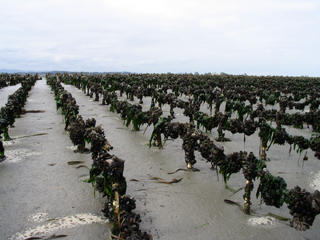|
Subscribe / Renew |
|
|
Contact Us |
|
| ► Subscribe to our Free Weekly Newsletter | |
| home | Welcome, sign in or click here to subscribe. | login |
Environment
| |
 |
September 27, 2012
Surveys 2012: Confluence Environmental Co.
Specialty: Environmental project delivery; ecosystem/habitat mitigation and restoration; regulatory strategy and permitting
Management: Chris Cziesla, partner
Founded: 2007
Headquarters: Seattle
2011 revenues: $1.6 million
Projected 2012 revenues: $2 million
Current projects: Environmental project delivery for SR 520 bridge replacement; regulatory strategy and compliance for shellfish aquaculture
When it comes to the state Route 520 bridge, Chris Cziesla said the work is never done.
Though a majority of its work was completed in 2011, Confluence Environmental Co. still works with the state Department of Transportation on mitigation planning and regulatory compliance issues.
“We have an ongoing role in helping with the evolving design of the bridge,” said Cziesla, partner at Confluence.
For the 14-person firm, the SR 520 bridge project that began in 2007 served as a springboard to other projects that required the firm’s regulatory compliance, mitigation and project delivery expertise, according to Cziesla.
“It was a pressure cooker, because of how intense the timeline was,” he said of the initial workload. “But it’s been a great opportunity to showcase our talents.”
Confluence partners Shane Cherry and Scott White also served in key roles on the SR 520 program, developing habitat restoration and mitigation plans and delivering local, state and federal permits.
Selective work
The Seattle-based firm specializes in environmental project management, as well as ecosystem and habitat mitigation and restoration.
For its size, Cziesla said Confluence Environmental brings a “very broad array of technical disciplines and serves many public and private clients.”
The firm recently won a contract with the Army Corps of Engineers that includes environmental studies such as sediment sampling in the Duwamish and Snohomish rivers and Grays Harbor, where the firm will study how clean the sediment is, in preparation for dredging.
“We have been very selective about the type of work we go after,” said Cziesla. “Because of that, we have been well positioned to get the work.” He estimated the project would last two years.
Confluence’s expertise stretches to advising Oregon, Washington and California shellfish growers about permitting to meet federal and state regulatory requirements. “They need permits from the Army Corps of Engineers, when working in the water from the Department of Ecology, and shoreline permits from local jurisdictions,” he said. “We work for the industry as a whole to say ‘Here’s a toolbox that growers can use to get through the regulatory needs, and these are the types of issues that are important to consider when working in sensitive habitats.’”
Glass is half full
In King County, Confluence is working for a basin committee including WSDOT, the Port of Seattle, and municipal governments on habitat restoration for Miller and Walker creeks. “These are in pretty intensely developed watersheds,” he said. “Our goal is to identify restoration priorities in those watersheds.”
Looking at the economy, Cziesla said his view is that the glass is half full, and there is plenty of reason for optimism for his firm. He conceded that competition in 2012 is twice what it was five years ago.
“Folks are hungry,” he said, referring to competing firms. “We differentiate ourselves in the expertise and skill sets we provide. We’re trying to make controlled, strategic and sustainable growth. We want to keep our people busy for the long term.”
Other Stories:
- Bringing clarity to stormwater management policy
- Surveys 2012: Paladino & Co.
- Surveys 2012: Aspect Consulting
- Surveys 2012: HWA GeoSciences
- Surveys 2012: Climate Solutions
- Surveys 2012: CH2M Hill
- Surveys 2012: Herrera Environmental Consultants
- Lean processes could change the construction industry
- Getting stormwater back into the ground
- Park(ing) Day provides parallel green objectives
- Fewer projects will need environmental review
- Tapping into wastewater plants for renewable energy
- How urban agriculture can help grow the economy
- Blending two projects puts dredge spoils to good use
- What it takes to compete in the New Economy
- System scrubs contaminated groundwater at Hanford
- Small businesses prevent pollution, save money
- Surveys 2012: Integral Consulting



